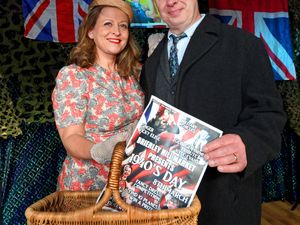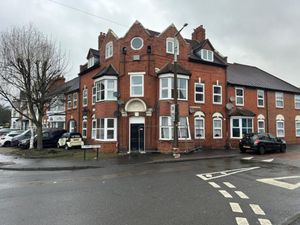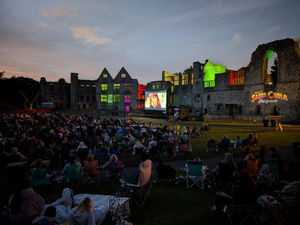Black Country Living Museum celebrates new buildings
They give a fascinating glimpse of Black Country working class life in the 1930s.

They give a fascinating glimpse of Black Country working class life in the 1930s.
But many visitors to the £10 million Oldbury Buildings development at the Black Country Living Museum will be unaware of the months of painstaking work that went into re-creating them.
The row of four shops was unveiled yesterday by historian Professor Carl Chinn at a ceremony attended by about 300 people. There is a building and decorating shop, a motorcycle dealership, a tobacconist and a radio sales and repairs shop.
Number 12 is home to Humphrey Brothers, builders and decorators, number 14 is motorcyle dealers Hartill & Sons, while number 16 is tabacconist Alfred Preedy & Sons and James Gripton radio sales and repairs is at number 18.
Each has shelves bulging with original stock that has been salvaged from across the Midlands, while there are also some realistic-looking reproductions.
Above the shops are two bedrooms and two sitting rooms, laid out to look just like they would have done in the 1930s.
The buildings are exact reconstructions of the smoke-blackened units that originally stood in Birmingham Street Oldbury. Every single brick and piece of timber is in the same position it would have sat for more than 100 years in Birmingham Street.
The original structures — built in the late 1800s — were taken apart, brick by brick, and transported across to the museum in Dudley last year.
They were then carefully re-assembled by the museum's team of specially-trained builders using a cataloguing technique where each brick is numbered.
The brick at the front left hand corner of a building at ground floor level is marked A1, then the next one along to the right is labelled B1, then C1, and so on. When the letters of the alphabet run out on that row, the bricks will then be called AA1, BB1, continuing along. The next level of bricks will be called A2, B2, C2, with the number rising up to the roof of the building. In total the process took about six months.
There is a permanent team of four builders who work on every project that the museum tackles.
Their most recent reconstruction job was the Cradley Heath Workers' Institute in 2005, rebuilt just yards from where the Oldbury Buildings now stand. About 30 builders in total have lent their services to the new project, with some outside contractors being employed.
When bosses at the museum took control of the long-disused Oldbury Buildings in 2005, they were then faced with the mammoth task of restoring them to their former glory.
Selwyn Jones, construction manager at the museum, said: "The buildings were derelict and hadn't been used for many years.
"We had some old photographs of the original shop fronts to work from, so we knew what had to be done to recreate the original facades.
"I'm very proud of what we have done here — we really get a kick out of seeing projects like this complete."
Not all of the frontages were created using the original materials, as many of them had disintegrated, but the lettering on the wooden signs is painted in the same font as it would have been in the 1930s, to look as authentic as possible.
The interiors of the shops are like treasure troves of period artefacts, ranging from rare motorbikes to cigarette packets.
Alfred Preedy & Sons tobacconists has about 50 different brands of cigarettes, and about 30 types of tobacco.
The shelves are full of replica cigarette boxes which have been specially made by a private firm. Many of the packets are originals, though, including brands such as Senior Service, Park Drive and Morris & Sons.
Many of the period items were donated by members of the public after an appeal was made in the Express & Star last summer.
An Art Deco fireplace was donated by a householder in Adshead Road, Dudley, while other people gave their collections of motorbike tools and parts.
Hartill & Sons Motorcycle Dealers has six pristine bikes in its shop window, with the star attraction a 1929 TT Sunbeam 80 - thought to be the only one of its kind in existence.
The vehicle is worth about £15,000 now and would have cost £55 at the time. It came into the museum's hands last year when it was bought from a dealer by the Marston Heritage Trust.
At the end of the row of shops, James Gripton Radio Sales and Repairs has about 30 radios and radiograms in stock. They were found by scouring the internet for collectors and using a book called Radio Radio, an exhaustive list of antique listening equipment.
To create a wartime atmosphere, a radiogram fitted with a CD drive plays snippets of broadcasts from the era, including a recording of Neville Chamberlain announcing war had been declared on Germany on September 3, 1939.
The museum recently welcomed its seven millionth visitor and this latest development is being hailed as a new era for the site.
Professor Carl Chinn said at yesterday's opening: "A lot of the Black Country people may not have had much, but their legacy is living on here and they are contributing to future generations."




